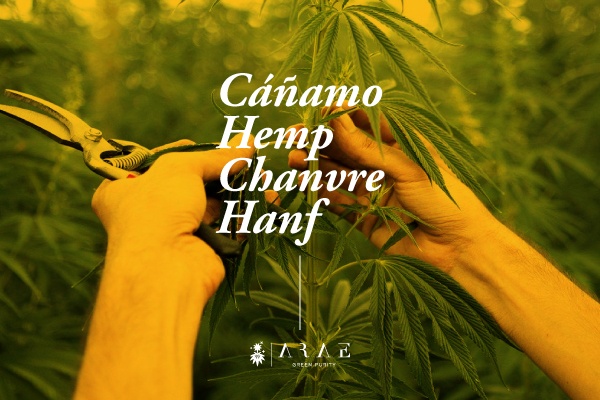
Hemp belongs to the Cannabaceae family, its scientific name is Cannabis Sativa as is psychoactive cannabis. So, hemp is cannabis? You could say so, the hemp plant is genetically identical to cannabis, but without any psychoactive power.
Hemp flowers and leaves also produce resin, but much less than most current varieties of weed. A hemp plant can be both male and female, would be the dioecious strain and also intersex and hermaphrodite, the latter are called monoecious.
Index
🚀 What is the Hemp plant like?
It is an annual, seasonal, dioecious plant (although there are also monoecious ones). Its height can vary from 3 to 13 feet (1 to 4 meters) or more. Its structure is strong, creating upright stems if the seeds are planted very close together, and branching if it has enough space and light.
Hemp leaf is palmed and petiolated, it can end up in 3, 5, 7, 9, 11 and even 13 leaflets, depending on the variety and type of crop. The green color can also vary depending on the variety, climate and crop.
The female hemp flowers are staminated, pistilled, and grow to form tight buds that surround the ovary. Those of the males form small sacs that later open to release pollen. There are hemp plants that create both female and male flowers, these are called intersex or hermaphrodites.
Hemp fruit is achene, covered by perigonium, and the seeds contain a curved or spiral embryo.

👌 Where does hemp come from?
Hemp’s history begins thousands of years ago, more than 10,000 years, being one of the oldest cultivars registered. Like psychoactive cannabis, hemp plant or tree is considered to be native from the Himalayas. The latest research tells us that it emerged in the northern part of China, near to what we know nowadays as Tibet.
Hemp spread throughout Asia, Africa and Europe, where it was cultivated on a massive scale. In England there are signs of hemp cultivation since 800 AD. In Spain and France it has been grown for more than 700 years, and it is still growing nowadays, but not for the same purposes as then.

🎯 How many varieties of hemp are there?
If by hemp we mean industrial hemp varieties, there are more than 50 certified by the EU only in Europe. These strains contain a maximum of 0.3% THC, and there are monoecious and dioecious strains. Below you can see a list with many of them:
| Antal | KC Dora | Armanca | KC Virtus | Beniko |
| KC Zuzana | Cannakomp | Kompolti | Carma | Hibrid TC |
| Carmaleonte | Lipko | Dacia Secuieni | Lovrin 110 | Codimono |
| Marcello | CS Markant | Monoica | Delta-Ilosa | Rajan |
| Delta-405 | Ratza | Denise | Santhica 23 | Diana |
| Santhica 27 | Dioica 88 | Santhica 70 | Eletta Campana | Secuieni |
| Jubileu | Epsilon 68 | Silvana | Fedora 17 | Szarvasi |
| Felina 32 | Tiborszallasi | Ferimon | Tisza | Fibranova |
| Tygra | Fibrol | Uniko B | Finola | Uso-31 |
| Futura 75 | Wielkopolskie | Ivory | Wojko | KC Bonusz |
New genetics that meet the approved THC levels are currently being produced. It is possible that in a few years we will see well-known commercial names in cannabis industry among the approved and even subsidized varieties.
🧐 Conclusion
Hemp is a sacred plant to many cultures and it is not surprising. It has been with mankind for thousands of years all over the planet, and the benefits it brings are so many that it is unmatched in nature.
